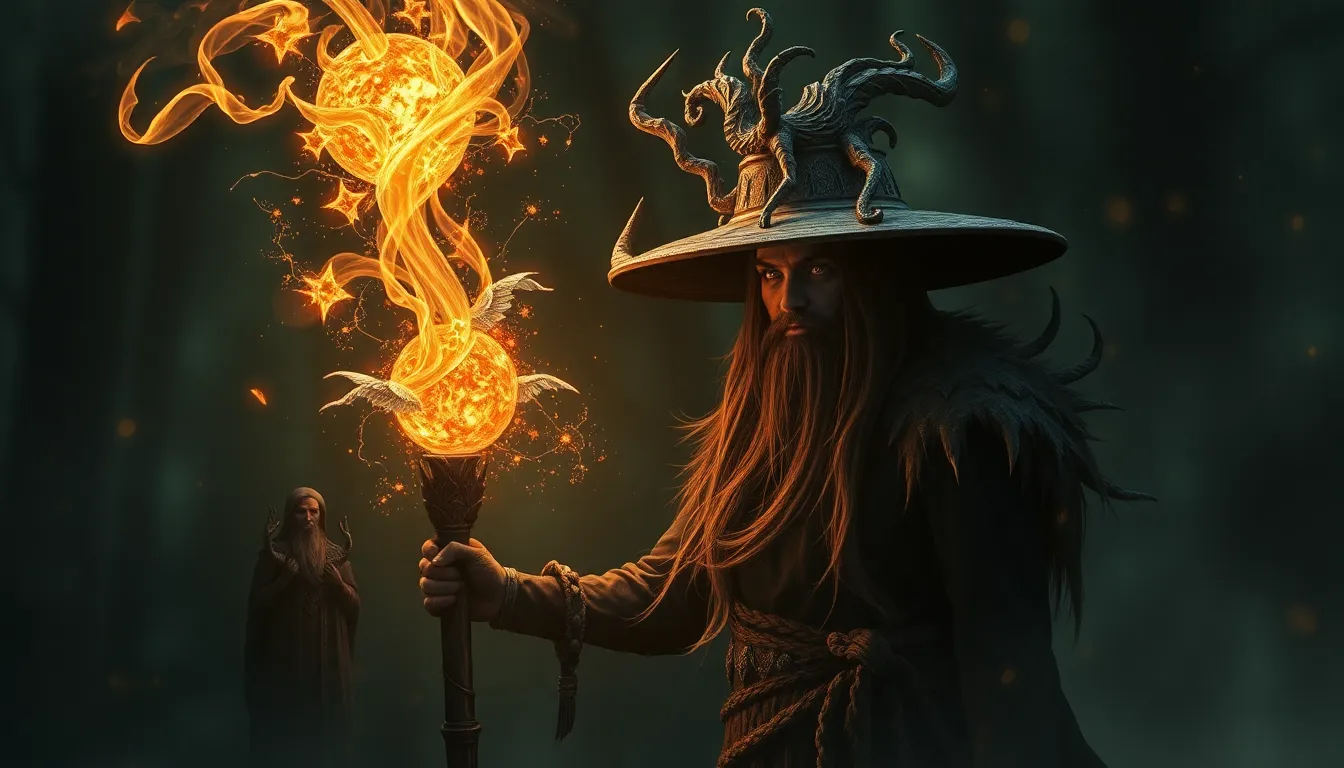The End of Days: Myths That Challenge Our Understanding
I. Introduction to Apocalyptic Myths
Apocalyptic myths are narratives that depict the end of the world or a significant transformation of the human condition. These myths often explore themes of destruction, renewal, and the ultimate fate of humanity. Historically, they have played a crucial role in shaping cultures, influencing beliefs, and guiding moral values across civilizations.
The significance of these myths extends beyond mere storytelling; they reflect humanity’s deepest fears and aspirations. In contemporary society, exploring these myths can provide insight into how they affect our collective psyche and inform our responses to existential threats.
II. The Role of Religion in Apocalyptic Narratives
Religious texts across various faiths often contain apocalyptic narratives that detail the end of days. For example:
- The Christian Bible’s Book of Revelation describes a final battle between good and evil, culminating in the establishment of a new heaven and earth.
- The Hindu concept of Kali Yuga presents a cyclical view of time, where the current age is seen as a period of decline leading to eventual renewal.
- Islamic eschatology includes belief in the Day of Judgment, where individuals are held accountable for their deeds.
Common themes across these texts include judgment, redemption, and a divine plan for humanity. Religious beliefs significantly influence societal behavior and policy, often affecting how communities prepare for perceived apocalyptic events.
III. Ancient Civilizations and Their End Times Predictions
Many ancient civilizations had their interpretations of the end times, offering unique perspectives rooted in their cultural contexts.
A. Mesopotamian myths: The Epic of Gilgamesh
The Epic of Gilgamesh includes themes of mortality and the quest for immortality, reflecting ancient Mesopotamian views on the human condition and the inevitability of death.
B. Mayan calendar and the 2012 phenomenon
The Mayan calendar sparked widespread speculation about the end of the world in December 2012, leading to various interpretations and fears, despite the calendar merely marking the end of a cycle.
C. Norse mythology: Ragnarok and its implications
Ragnarok is the Norse mythological end of the world, characterized by a series of catastrophic events, including battles and natural disasters, ultimately leading to the rebirth of the world.
IV. Modern Interpretations of Apocalyptic Myths
In modern times, apocalyptic narratives have evolved, reflecting new societal fears and challenges.
A. The rise of secular apocalyptic narratives
Secular interpretations have emerged, often focusing on political or environmental crises rather than religious frameworks.
B. Climate change as a contemporary end-of-days myth
The threat of climate change is frequently framed as an apocalyptic scenario, warning of catastrophic consequences if current behaviors persist.
C. Technological singularity and its existential threats
The idea of technological singularity raises concerns about artificial intelligence surpassing human intelligence, potentially leading to unpredictable and dangerous outcomes.
V. Psychological Effects of Believing in End Times
Beliefs in apocalyptic scenarios can lead to significant psychological effects on individuals and communities.
A. Fear and anxiety associated with apocalyptic beliefs
Many people experience heightened anxiety and fear regarding potential apocalyptic events, impacting their mental health and daily lives.
B. The phenomenon of doomsday prepping
Doomsday prepping has gained popularity, with individuals and groups preparing for various end-of-days scenarios by stockpiling resources and developing survival plans.
C. Coping mechanisms people employ in the face of uncertainty
People often seek solace in community, spirituality, or practical preparations when facing the uncertainty of potential apocalyptic events.
VI. Myth vs. Reality: Debunking Common End Times Predictions
Many past predictions of the apocalypse have proven to be unfounded, raising questions about their credibility.
A. Historical accuracy of past predictions
Numerous predictions throughout history, such as those made by religious leaders and scientists, have failed to materialize, suggesting a pattern of fear-based narratives.
B. Scientific perspectives on apocalyptic scenarios
Scientific analysis often provides a rational perspective on apocalyptic scenarios, emphasizing the importance of evidence-based approaches to understanding potential threats.
C. The role of media in perpetuating end-of-days myths
Media plays a significant role in shaping public perception of apocalyptic narratives, often sensationalizing events and contributing to collective anxiety.
VII. Cultural Representations of the Apocalypse
Apocalyptic themes have permeated literature, film, and art, reflecting society’s fascination with the end of days.
A. Literature: From Dante to contemporary fiction
From Dante Alighieri’s “Divine Comedy” to modern dystopian novels, literature has long explored themes of apocalypse and rebirth.
B. Film and television portrayals of the end of days
Films like “Mad Max” and series such as “The Walking Dead” depict apocalyptic scenarios, often serving as commentary on contemporary societal issues.
C. Art and music reflecting apocalyptic themes
Artists and musicians have drawn inspiration from apocalyptic themes, using their mediums to explore human fears and hopes regarding the end times.
VIII. The Implications of Believing in an Imminent Apocalypse
Believing in an impending apocalypse can have profound implications for society.
A. Societal impacts: Political, economic, and social changes
Such beliefs can lead to significant political and economic shifts, as communities prepare for or react to perceived threats.
B. The moral responsibility of preparing for the future
There is a growing discourse on the moral responsibility of individuals and governments to prepare for potential future crises.
C. The effect on intergenerational relationships and planning
Concerns about the future can strain relationships across generations, as differing views on preparedness and existential threats emerge.
IX. The Future of Apocalyptic Myths in a Changing World
As global crises continue to evolve, so too will the narratives surrounding apocalyptic myths.
A. Evolving narratives in response to global crises
Current events, such as pandemics and geopolitical tensions, are likely to shape new apocalyptic narratives that reflect contemporary fears.
B. The role of technology and science in shaping future myths
Technological advancements and scientific discoveries will influence how we conceptualize and respond to potential apocalyptic scenarios.
C. The potential for new myths to emerge from current events
As society faces unprecedented challenges, new myths may arise, reflecting our collective hopes and fears for the future.
X. Conclusion: Understanding Myths as a Reflection of Human Experience
Studying apocalyptic myths offers valuable insights into the human experience, revealing our deepest fears, desires, and moral dilemmas. These narratives, whether ancient or modern, serve as a mirror reflecting societal values and concerns. By understanding these myths, we can better navigate the complexities of contemporary life and prepare for the uncertainties of the future.



